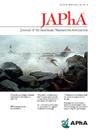Chain community pharmacists’ requests for patient information during routine care
IF 2.5
4区 医学
Q3 PHARMACOLOGY & PHARMACY
Journal of the American Pharmacists Association
Pub Date : 2024-10-24
DOI:10.1016/j.japh.2024.102273
引用次数: 0
Abstract
Background
To optimize service provision, community pharmacists need information (e.g., laboratory values and updated medication lists), which can be difficult to obtain. Contacting prescriber offices is a common approach to obtain information but is often ineffective. Health information exchange (HIE) is one potential solution to this problem, and recent survey research has identified the information needs of independent pharmacists that could be addressed through HIE. However, the information needs of chain community pharmacists are unknown.
Objective
The objective of this study was to characterize the patient information requests made by chain community pharmacists during routine practice.
Methods
This electronic card study captured cross-sectional observational data on patient information requests made by chain pharmacists in central Indiana during routine practice. Only one pharmacist meeting eligibility criteria per pharmacy could submit data. Pharmacists were randomized to a 2-week data collection period. In real-time, pharmacists recorded the following: type of information requested, reason for request, information source, whether initial or follow up request, modality of communication, and the time required to make the request. Data analysis occurred via descriptive statistics. The Indiana University Institutional Review Board approved all study procedures.
Results
Nineteen of the 33 eligible pharmacists (57.6%) consented to the study. Most participants held a Doctor of Pharmacy degree (78.9%) and were the pharmacy manager (89.5%) at their location. Updated medication orders/lists (41.3%) and insurance (33.7%) were the most common type of requested information and were primarily used for prescription clarification/filling (93.4%). The prescriber office (53.6%), as well as the patient/caregiver (39.8%), was the most frequent source of this information. Requests were largely completed by telephone (61.2%) and averaged 6.0 minutes (standard deviation: 4.8).
Conclusion
Community pharmacists require key patient data during routine practice. There is a need to develop mechanisms, like HIE, to address gaps in needed information in the community pharmacy setting, regardless of the offered services.
连锁社区药剂师在日常护理过程中对患者信息的要求。
背景:为了优化服务,社区药剂师需要信息(如化验值和更新的药物清单),但这些信息可能很难获得。联系处方医生办公室是获取信息的常用方法,但往往效果不佳。健康信息交换 (HIE) 是解决这一问题的潜在方法之一,最近的调查研究已经确定了独立药剂师的信息需求,可以通过 HIE 解决。然而,连锁社区药剂师的信息需求尚不清楚:本研究旨在了解连锁社区药剂师在日常工作中对患者信息需求的特点:这项电子卡片研究收集了印第安纳州中部连锁药剂师在日常工作中提出的患者信息请求的横断面观察数据。每个药店只能有一名符合资格标准的药剂师提交数据。药剂师被随机分配到为期两周的数据收集期。药剂师实时记录以下内容:请求信息的类型、请求原因、信息来源、初次请求还是后续请求、沟通方式以及请求所需时间。数据分析通过描述性统计进行。印第安纳大学机构审查委员会批准了所有研究程序:33 名符合条件的药剂师中有 19 人(57.6%)同意参与研究。大多数参与者拥有药学博士学位(78.9%),并且是所在单位的药房经理(89.5%)。更新的用药单/清单(41.3%)和保险(33.3%)是最常见的信息请求类型,主要用于处方澄清/填写(93.4%)。开处方者办公室(53.6%)和病人/护理者(39.8%)是最常见的信息来源。大部分请求通过电话完成(61.2%),平均耗时 6.0 分钟(标清:4.8 分钟):结论:社区药剂师在日常工作中需要病人的关键数据。社区药剂师在日常工作中需要关键的患者数据。有必要开发 HIE 等机制,以解决社区药房环境中所需信息的缺口,无论提供的服务如何。
本文章由计算机程序翻译,如有差异,请以英文原文为准。
求助全文
约1分钟内获得全文
求助全文
来源期刊
CiteScore
3.30
自引率
14.30%
发文量
336
审稿时长
46 days
期刊介绍:
The Journal of the American Pharmacists Association is the official peer-reviewed journal of the American Pharmacists Association (APhA), providing information on pharmaceutical care, drug therapy, diseases and other health issues, trends in pharmacy practice and therapeutics, informed opinion, and original research. JAPhA publishes original research, reviews, experiences, and opinion articles that link science to contemporary pharmacy practice to improve patient care.

 求助内容:
求助内容: 应助结果提醒方式:
应助结果提醒方式:


